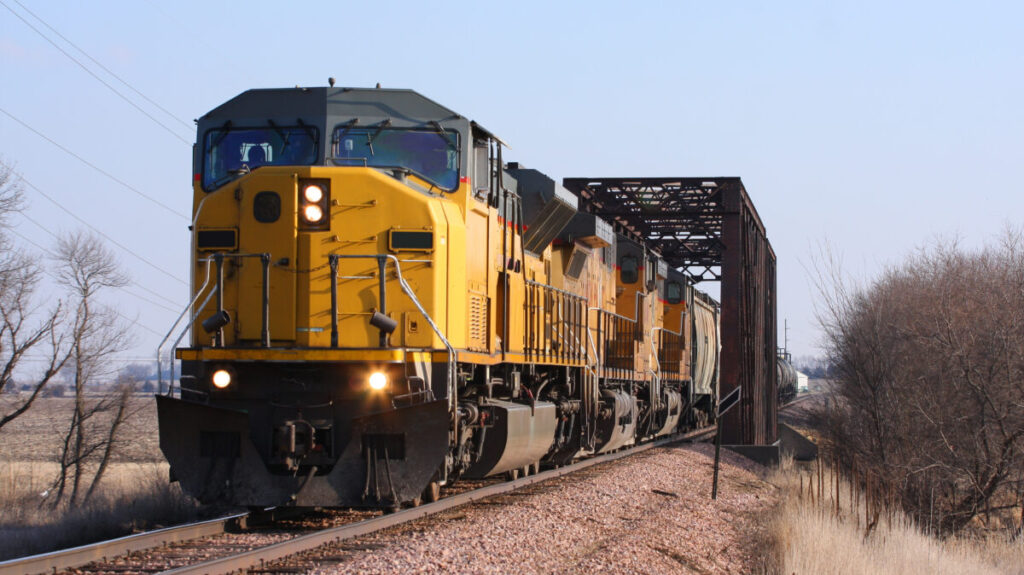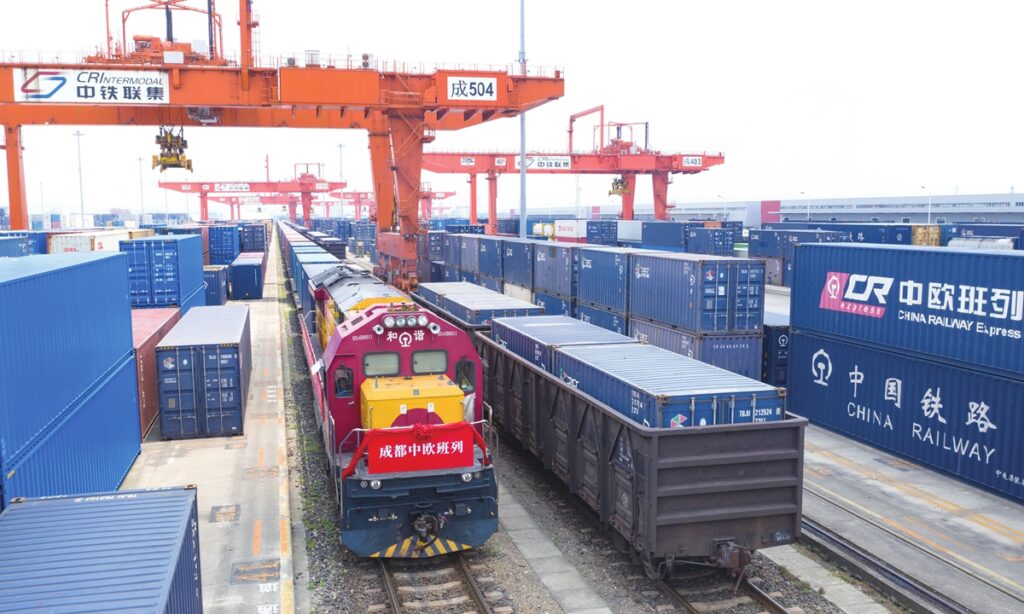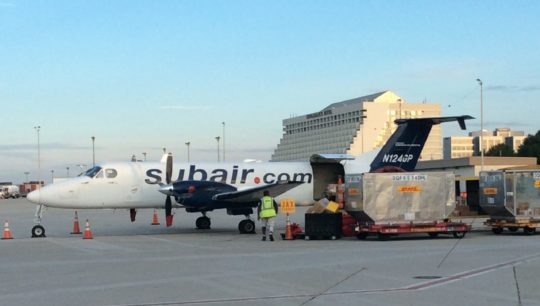- By Della tj
- October 30, 2025
- Rail Freight, Shipping
In today’s fast-paced trade environment, professional rail freight from Shenzhen to Italy offers a balanced solution for exporters needing efficiency, affordability, and reliability. It bridges Asia and Europe with faster transit than sea shipping and lower costs than air freight, making it ideal for consistent supply chains.
Why Choose Rail Freight Between Shenzhen and Italy?
Rail freight has become a game-changer for companies shipping goods across Eurasia. Unlike sea freight, which takes over a month, rail transport delivers cargo in just 15–18 days, offering predictable schedules and greener logistics.
| Advantage | Description |
|---|---|
| Transit Speed | 15–18 days compared to 30–40 by sea |
| Cost Efficiency | Up to 50% cheaper than air freight |
| Reliability | Fixed weekly departures |
| Eco-Friendly | 70% lower CO₂ emissions |
Moreover, as rail networks expand through the China–Europe Railway Express, exporters gain better access to Italian hubs like Milan, Rome, and Venice.

How Much Does Rail Freight Cost from Shenzhen to Italy?
Prices depend on container size, weight, and cargo type. However, rail freight remains highly competitive compared to other modes.
| Container Type | Typical Goods | Estimated Cost (USD) | Transit Time |
|---|---|---|---|
| 20ft Standard | General goods | $4,800–$5,200 | 16 days |
| 40ft Standard | Electronics | $8,800–$9,200 | 17 days |
| 40ft High Cube | Machinery | $9,600–$10,000 | 17 days |
Additionally, service upgrades such as tracking, insurance, and bonded storage are available for improved logistics management.
What Goods Are Ideal for Rail Freight?
Professional rail freight supports both general and specialized cargo. It’s particularly suitable for products requiring moderate transit speed and stable handling.
| Category | Examples | Recommended Container |
|---|---|---|
| Electronics | Tablets, phones, parts | 20ft / 40ft |
| Apparel | Textiles, footwear | 40ft high cube |
| Machinery | Industrial tools | 40ft open-top |
| Chemicals | Non-hazardous liquids | ISO tank |
Furthermore, reefer containers can carry temperature-sensitive goods such as pharmaceuticals and perishable items safely.
Transit Routes and Timeframes
The main railway route passes through China, Kazakhstan, Russia, Belarus, Poland, and finally Italy, connecting Shenzhen’s manufacturing base directly to European markets.
| Destination | Route Example | Transit Time |
|---|---|---|
| Milan | Shenzhen → Xi’an → Warsaw → Milan | 16 days |
| Rome | Shenzhen → Chongqing → Duisburg → Rome | 17 days |
| Venice | Shenzhen → Zhengzhou → Vienna → Venice | 15 days |
On the other hand, sea freight takes 30–40 days and air freight, while faster, costs three to four times more.
Required Customs Documents
To ensure smooth customs clearance, accurate and complete paperwork is critical. Professional freight forwarders handle documentation and coordination with both Chinese and EU customs.
| Document | Description |
|---|---|
| Commercial Invoice | Declares product value |
| Packing List | Lists item details |
| Rail Waybill | Proof of transport |
| Certificate of Origin | Confirms manufacturing country |
| Import/Export Declaration | Needed for customs filing |
| Insurance Certificate | Protects shipment value |
Moreover, advance filing and electronic document exchange significantly reduce customs delays.
Case Studies: Shenzhen to Italy Rail Shipments
Case 1: Electronics to Milan
Cargo: Smart devices, 18 pallets
Container: 40ft standard
Cost: $8,900
Transit Time: 16 days
Result: Improved market responsiveness, saving 20 days versus sea shipping.
Case 2: Machinery to Rome
Cargo: Industrial machines, 12 tons
Container: 40ft high cube
Cost: $9,800
Transit Time: 17 days
Result: Project completed 25% faster with stable delivery.
Indeed, these examples highlight how rail freight supports faster turnaround and stronger business performance.
Need a reliable logistics partner? Share your shipment details and we’ll provide a tailored quotation quickly and accurately.
Comparison: Rail vs. Air vs. Sea Freight
| Aspect | Rail Freight | Air Freight | Sea Freight |
|---|---|---|---|
| Transit Time | 15–18 days | 5–7 days | 30–40 days |
| Cost Level | Medium | High | Low |
| Reliability | High | Very High | Moderate |
| Carbon Emission | Low | Very High | Medium |
| Cargo Type | General goods | Small parcels | Bulk goods |
Overall, rail freight balances cost and speed effectively, making it ideal for medium-value, time-sensitive shipments.
Choosing the Right Rail Freight Partner
Selecting an experienced logistics provider ensures seamless coordination across routes, terminals, and customs offices.
Key Criteria
- Proven record in Shenzhen–Italy rail operations
- Transparent pricing with detailed quotations
- End-to-end services including warehousing and local delivery
- Real-time cargo tracking and customs brokerage
Additionally, professional partners offer door-to-door delivery, combining rail and road logistics to minimize handling risks.
Conclusion
In summary, professional rail freight from Shenzhen to Italy provides a strategic logistics channel that combines affordability, speed, and sustainability. With reliable routes, competitive pricing, and professional customs handling, it’s an efficient option for exporters seeking dependable transit between China and Europe.
Choosing a professional provider ensures seamless operation and consistent performance — the foundation of a strong international supply chain.
Request a Quote
Need a tailored solution for your shipping from China?Let TJ China Freight Forwarder assist you with reliable, cost-effective service.
FAQ:
Q1.How long does rail freight from Shenzhen to Italy take?
Transit usually takes 15–18 days. This professional rail freight service ensures faster delivery than sea freight while maintaining excellent reliability and cost control.
Q2.What’s the cost for a 40ft container shipment?
A 40ft container from Shenzhen to Italy typically costs $8,800–$10,000, depending on cargo weight, route, customs clearance, and added insurance.
Q3.Can fragile items be shipped by rail?
Yes, fragile goods like electronics or glassware can safely travel by professional rail freight using vibration-proof packaging and secured loading.
Q4.Are customs fees included in rail freight pricing?
Generally, customs fees are billed separately, depending on product category, declared value, and Italy’s import tariff regulations at destination terminals.
Q5.Does rail freight include tracking?
Indeed, professional rail freight services from Shenzhen to Italy offer GPS tracking systems that provide real-time cargo visibility throughout the entire route.




